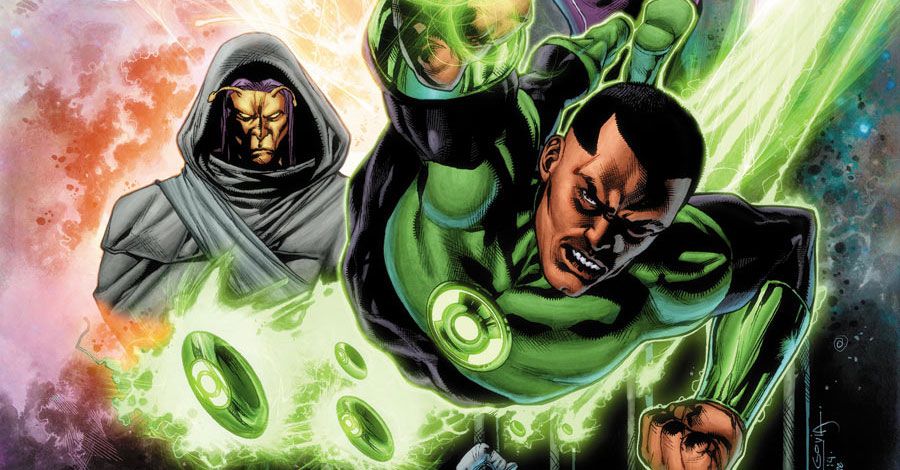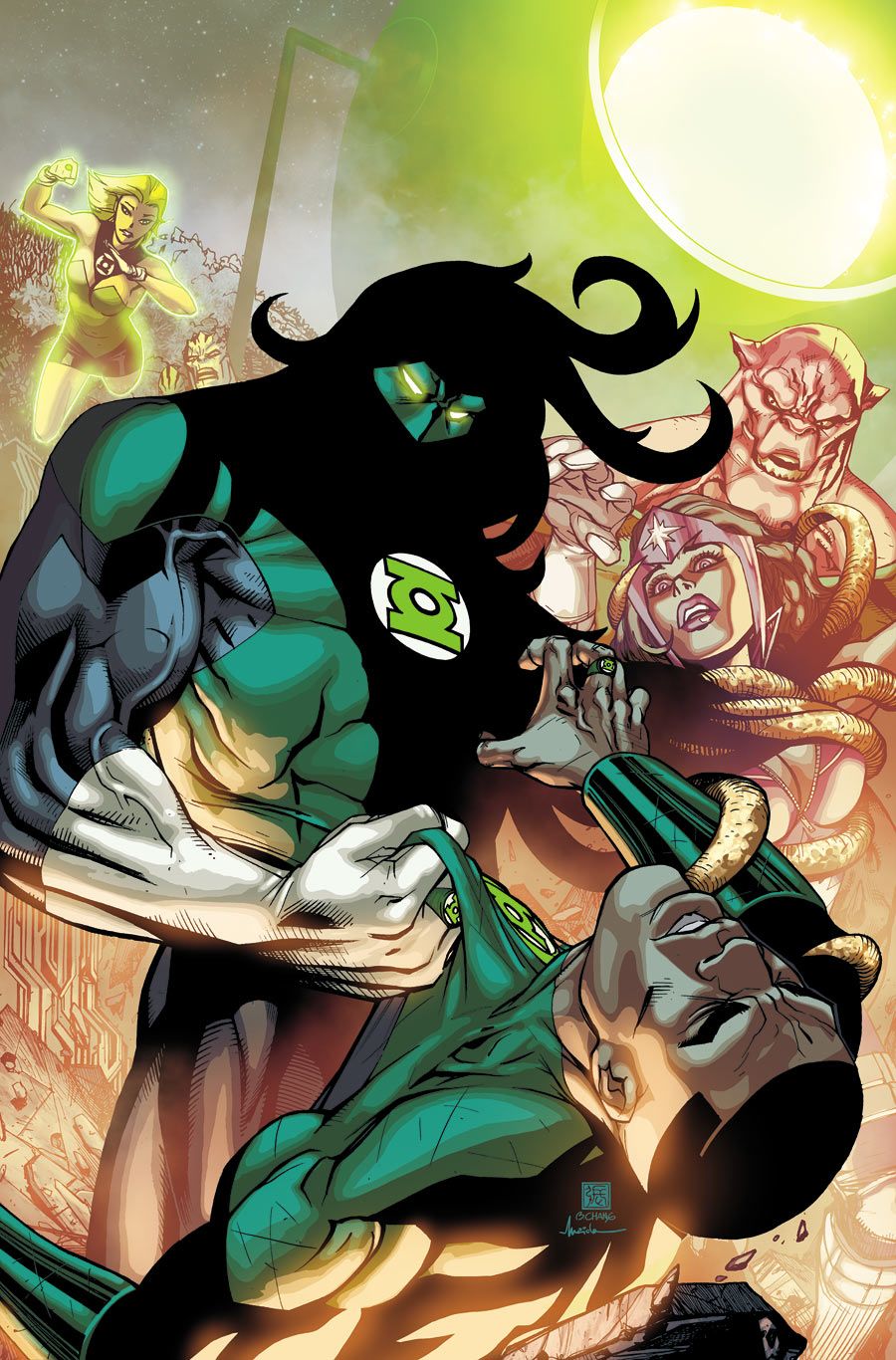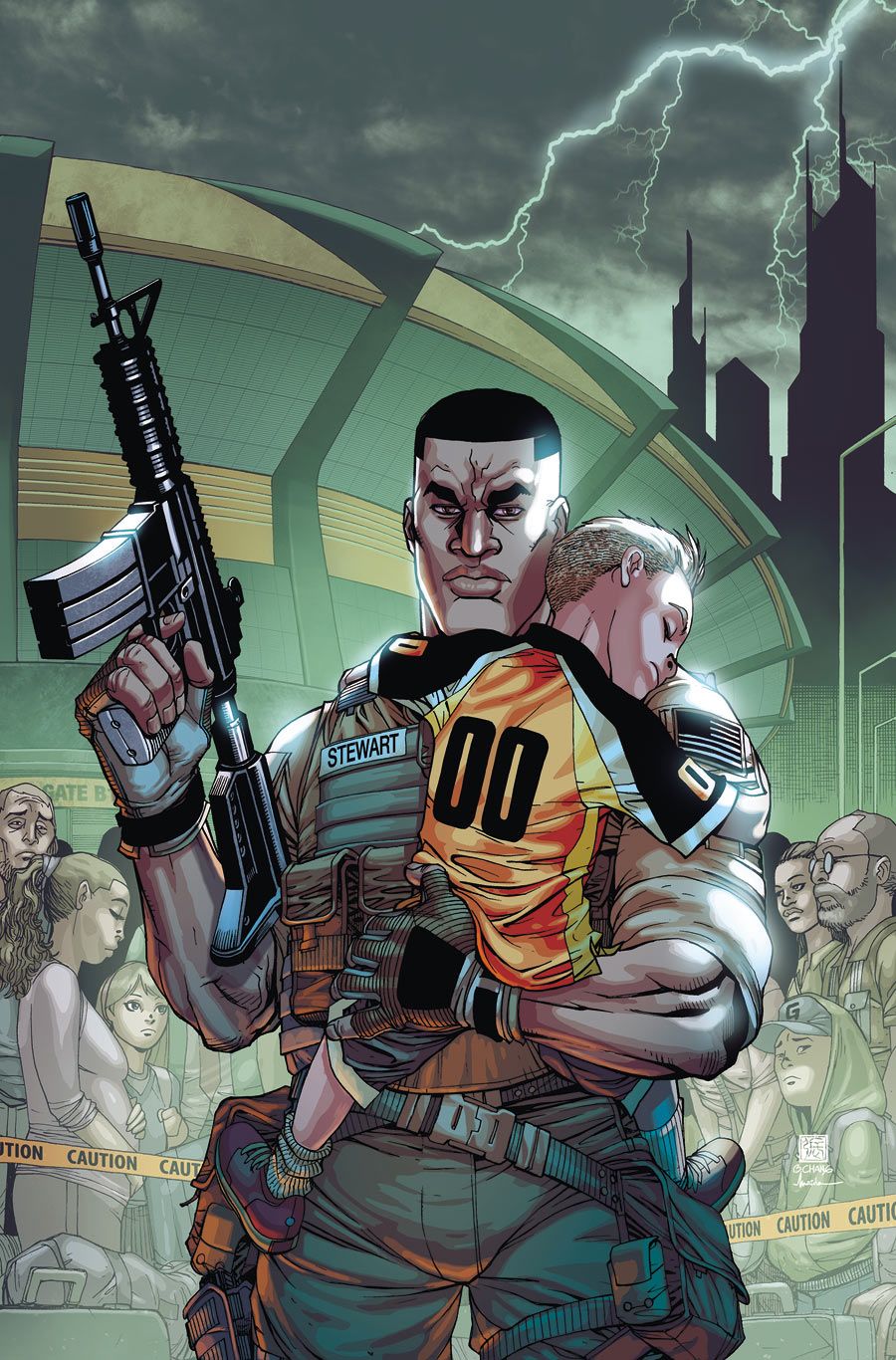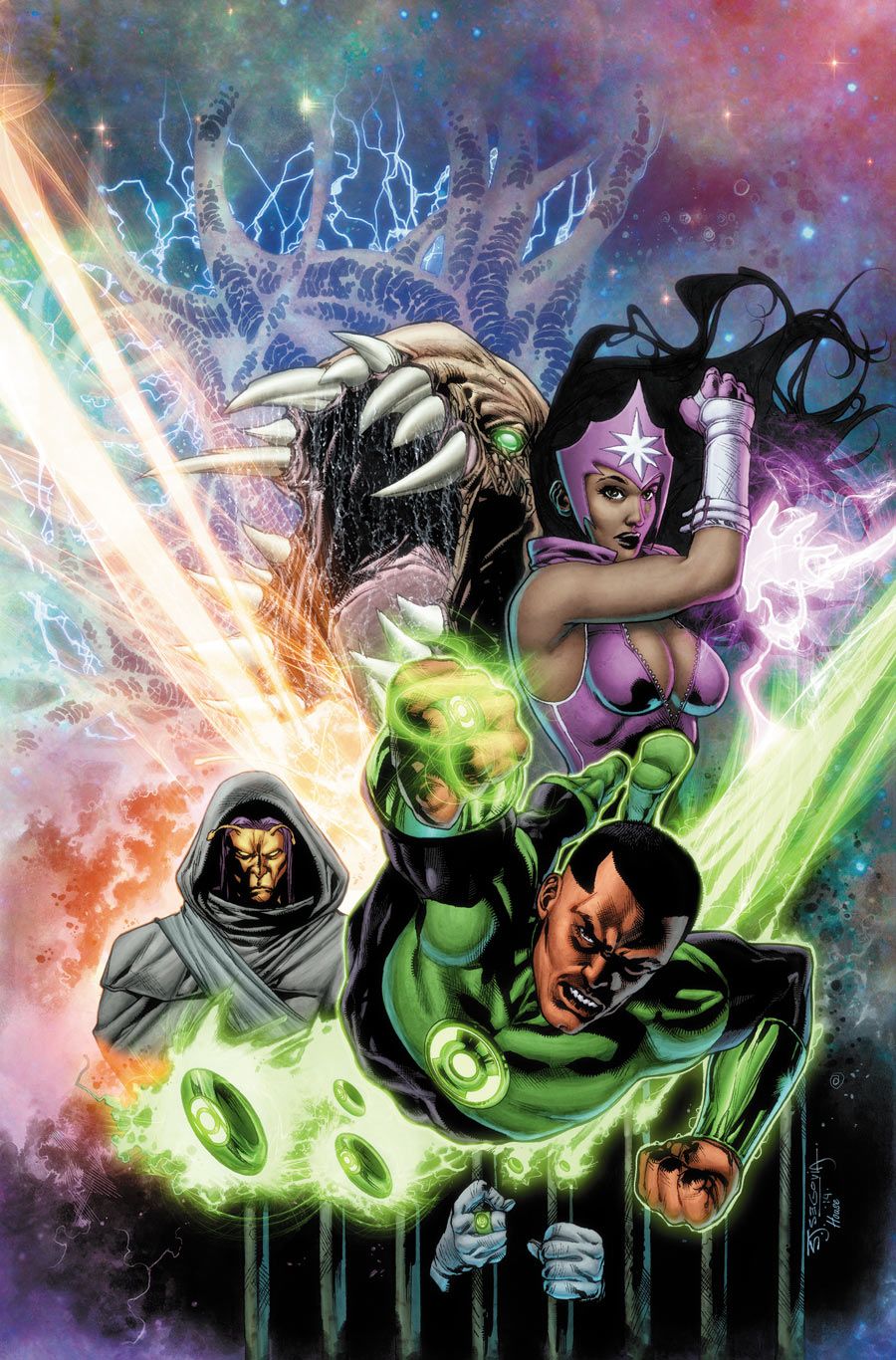Before his big break into comics, the indie surprise hit "Pinocchio, Vampire Slayer," Van Jensen worked the crime beat for the Arkansas Democrat-Gazette. While that may not be a traditional launching pad into scripting the adventures of an intergalactic police force, it's actually provided plenty of plot fodder for his current run on DC Comics' "Green Lantern Corps."
With the shape-shifting Durlan race infiltrating the Corps leading into the upcoming "Uprising" arc, John Stewart and the rest of the Green Lanterns have turned to an unlikely investigator to crack the case. In "Green Lantern Corps" #30, Mogo -- the sentient living planet -- flushes Durlan deserters from the woods, only to learn that the heavenly war had just begun.
RELATED: Venditti & Jensen Talk Wally West's Rebirth in "The Flash"
CBR News connected with Jensen to discuss utilizing Mogo as game-changing character, establishing John Stewart as a leader unencumbered by making tough decisions and what a race becomes when deception is its driving force.
Jensen also teased what's to come in his next big arc with artist Bernard Chang, which crosses over with "Green Lantern," and revealed that a fan favorite member of the Green Lantern Corps will soon make his, her or its New 52 debut.
CBR News: In a previous life, you worked as a crime reporter. Do you think Mogo would make a good crime reporter, or maybe a private eye? He sure sussed out the Durlan spies quickly once the manhunt started?
Van Jensen: I like that idea. [Laughs] Mogo is such a fun character to write. It's a completely different perspective -- Mogo as the all-seeing eye. Maybe we can get a special one-shot featuring Mogo on the case.
Mogo shares a few panels with Morro as they talk about the fire that would spread, weeding out the Durlans. Am I reading this right? No doubt happy with the results, the fire would have to hurt Mogo while it burned, but it's a case of the greater good.
That's exactly it, and again, it's a neat character piece for Mogo. Mogo is so huge and dominating and threatening because he, or she, or whichever pronoun you want to use, is a planet. But Mogo also has a history of getting damaged harshly for the greater good of the Corps. It seemed like it would totally makes sense that Mogo would say, "It's not like I want to burn off a bunch of my surface but I understand the utility of it." Even a planet can have interesting character developments.
While this hunt obviously affected Mogo, it affected Von Daggle, too. We learn a lot from Daggle in this issue about the Durlans, the Six Minute War and the Ancients, who are coming for the uprising. But if the Corps can't trust the Durlans, can readers trust Daggle?
To me, Von Daggle is a fascinating character because, and this is something central to the Durlan race, the Durlans don't know what they are. They don't even know what their original form was. Their appearance, even what's inside, is based on deception. The other Durlans live to deceive for more nefarious purposes than Daggle, but he, while based on deception, wants to be good. Most often, deception is seen as an immoral or bad activity so is it possible for someone to be good when their inherent power set is bad? I find that a really fascinating inner conflict.
I'm glad you mentioned deception, because I love this sequence in #30, which explains that deception even outweighs a Durlan's ability to replicate the fiercest creature. Why does deception trump all other traits when you are talking about being a truly great villain?
It's about deception being used as a weapon. The obvious assumption with a shape shifter is that they become some giant monster and can attack the heroes, but really, seeding conflict and uncertainty amongst the heroes can cause even more damage. It's the reason you have double agents and sleeper cells -- that's the principal behind all of those things. You are making your enemy uncertain and that limits their abilities to fight in a very grand fashion. With the power of information and stealing secrets and all of those other things tied into deception, that's really at the heart of this story.
And deception really helps the Durlans do what they do best, too, which is survive.
Exactly. What really appeals to me about the Durlans and what I really wanted to explore is that sense of desperation and how they developed as a race and evolved and grew this ability that puts them into conflict with each other, but now, it is manifested in a different way. They are a very angry, very desperate, self-loathing race. And they are also big and gross and nasty, which doesn't hurt. [Laughs]
I love the armor that the Durlans have built for war. It's actually reminiscent of the Daleks of "Doctor Who" fame. I know you didn't have many comics available during your childhood, but were you a fan of sci-fi growing up in Nebraska?
I was never a fan of "Doctor Who" because I didn't see it until much later. We didn't get it. Much like we only had three comic books available, we only had three channels on our TV by using an antenna. [Laughs]
But most of what I read was old sci-fi novels. My dad and my grandpa were big sci-fi fans and I inherited those collections. I am actually reading a collection of the best sci-fi stories by year right now. I think I am on 1961. But you combine a big monster with a suit of armor and that seems like peanut butter and jelly to me. [Laughs]
John Stewart wonders if the Corps is culpable for what happened on Durla all those years ago. Will John's thoughts on this subject be explored further in "Uprising?"
This is something I really wanted to explore from day one with John. The "Batman: Zero Year" tie-in issue that we did, "Green Lantern Corps" #25, really set up that history with John, which is to say that he has gone through this type of situation once before. His experience with the Marine Corps and his leadership as part of a militaristic organization led him astray. I think that's really natural and a truism of conflict, that it breeds more conflict. With the Marine Corps, the story was that John essentially saw an organization that was leading him astray, that he disagreed with, and he decided to walk away from it.
Now, what we're seeing is an older, more mature John. He still has some values, but when he's faced with bad leadership or a history of bad decisions, he doesn't go and hang up his ring and do something else. He's very determined to ask and understand if it is time to remake the Corps. Do we need to change the focus of our mission? That's going to continue to manifest and is really at the center of what's happening with John in the "Uprising" arc.
Looking ahead to "Green Lantern Corps" #31, the solicitation teases that a long-lost member of the Corps is going to return. And that member is --
I'm not saying. [Laughs]
But I will say this: On Twitter and in the forums, where I interact with a lot of "Green Lantern Corps" fans, there are certain characters always mentioned, and there is a list that readers regularly ask for -- and this is absolutely one of those characters. There is a lot of interest in this character, a lot of passion, and I think fans are going to be very, very excited when they see who it is.
"Green Lantern Corps" #31 is a script that I really had a lot of fun with. It's a very specific kind of action story that I think is told in a new way. The pages that Bernard Chang has drawn are amazing. The work he does is always good, but he tops himself every issue. And this issue is no exception. It's a really stunning issue.
To clarify, is the long-lost member of the Corps making his, her or its New 52 debut in "Green Lantern Corps" #31?
We have not seen this character in the New 52. This is a new 52 debut, which I did not mean to make rhyme. [Laughs]
"Green Lantern Corps" #30, by Van Jensen and featuring art by guest artists Scott Kolins and Chris Batista, is on sale now.




